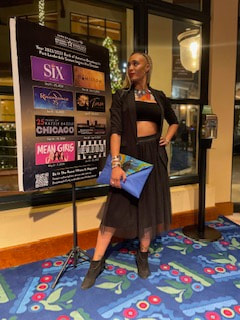
eOh “Come Ye” into the tabernacle of “Grace.” Enter the divine with an agile spine, rotating pelvis, and open back. Breathe in the fullness of the Continent, Caribbean, and the Americas. Have “Mercy.” Asé! I was overjoyed and ready to partake of this fresh manna from the heavens served by this glorious company. As I walked into the Amaturo Theater at the Broward Center for the Performing Arts for the final show (Friday), I was stunned by the fact that there was no program or QR code to scan. And then dumbfounded by the ridiculously low attendance (I will address this separately). There were more empty chairs than bodies. In a state of confusion, I walked to my chair and tried to remain focused on the show.
The first piece “Come Ye” (2002) featured music by Nina Simone and Fela Anikulapo Kuti. The costumes were various denim designs. The work was presented in several sections with Brown’s signature phrase work illuminating Afro Cuban movement and various dances from the Continent. Shoulders were rolling, machetes were slicing, and hands and torsos were pounding. The second section offered a lovely contrast with an adagio. Dancers bourreéd across the floor while Nina Simone belted out “One More Sunday in Savannah.” The Third section was all about revolution; we saw the notable swagger and groove that has become synonymous with Brown’s aesthetic. A strong moment featured the full ensemble travelling around the stage showcasing signature movements in the repertoire. If “hit it and skin it” was a person, it was Baby Love, Ms. Joyce Edwards. Her presence is ethereal, captivating the audience with her command of the space. She is giving height, strength, power, grace, and femininity. The clarity in her movement brings life to Brown’s narrative. The men’s section in the Fela moment felt nostalgic taking me back to Baba Richard Gonzalez’s Afro Caribbean and Orisha Dance class at Djoniba Dance and Drum Center and Peridance Center in New York.
The second piece “Mercy” (2019) with music by Meshell Ndegeocello featured beautiful ensemble work. I was immediately drawn in by the white fabric dropped from the ceiling. This was contrasted with the blue backdrop and black costumes. The second woman who enters wears a black hat/crown like the Zulu inspired hat worn by Queen Romonda in Black Panther; this took me out. Demetrius Burns’s solo was pure fiyah! He embodies the seamless synthesis of African Diaspora movement journeying through space and time which is amplified by his costume, a chiffon balloon top and black flowing pants.
“Grace” (1994/2004), the third and final piece with a sound score by Duke Ellington, Roy Davis, Jr., and Fela Anikulapo Kuti was deep. Joyce Edwards solo begins the crossing with power, strength, grace, beauty, elegance, confidence. It’s the walk for me! In this work, some of the dancers were a little stiff in the hips, back, and torso, and the movement aesthetic, that groove/flow is not so obvious and pronounced. The energy level noticeably dropped. I questioned if they were feeding off our (the audiences) energy? The house was dead. From where I was sitting, heads were not bopping, backs were not contracting, and shoulders were static.
Michelle Murray and I did our call and chants to liven up the house. I did my Fela “Yea Yea” call and Michelle chimed in with her high pitched “Yaowww.” This seemed to work because some of the audience members verbalized their appreciation as well. This appeared to revitalize the company because the fiyah was stoked; this was demonstrated as they concluded the piece.
Brown’s aesthetic includes a softness that hits and funks within the steady pulse that grooves yet conjures up a fiyah that demands the body: head, neck, torso, shoulders, back, hips, and legs to respond. When it’s there, it is remarkable and when its off, it leaves the (informed) viewer somewhat disappointed. Some of the company members have not found this yet or it’s not consistent. This doesn’t negate the fact that they got it in. They are all fiercely strong, but the newness of the group is observable. I am certain they will find Brown’s poignant groove.
Evidence, a world renown dance company is always a soul fulfilling experience and something not to be missed. It was painfully embarrassing as a Florida dance artist to see what Broward Center for the Performing Arts offered their guests. I’ve seen local high school and dance studio performances with a better turn out. What happened Broward Center for the Performing Arts? Were the tickets just not purchased due to poor marketing and/or did the people who purchased the tickets all decide not to show up? What say you? There was “No evidence of Evidence…” (Shanna Woods 2022) in terms of what the presenting agency demonstrated. Let’s do better South Florida.
Images
Image 1: Come Ye
Photographer: Julieta Cervantes
Image 2: Mercy
Photographer: Ernesto Mancebo
Image 3: Grace
Photographer: Julietta Cervantes
Image 4: Michelle Grant-Murray and A’Keitha Carey
Photographer: A’Keitha Carey
Image 5: Empty Seats
Photographer: A’Keitha Carey
Image 6: A’Keitha Carey
Photographer: Michelle Grant-Murray
The first piece “Come Ye” (2002) featured music by Nina Simone and Fela Anikulapo Kuti. The costumes were various denim designs. The work was presented in several sections with Brown’s signature phrase work illuminating Afro Cuban movement and various dances from the Continent. Shoulders were rolling, machetes were slicing, and hands and torsos were pounding. The second section offered a lovely contrast with an adagio. Dancers bourreéd across the floor while Nina Simone belted out “One More Sunday in Savannah.” The Third section was all about revolution; we saw the notable swagger and groove that has become synonymous with Brown’s aesthetic. A strong moment featured the full ensemble travelling around the stage showcasing signature movements in the repertoire. If “hit it and skin it” was a person, it was Baby Love, Ms. Joyce Edwards. Her presence is ethereal, captivating the audience with her command of the space. She is giving height, strength, power, grace, and femininity. The clarity in her movement brings life to Brown’s narrative. The men’s section in the Fela moment felt nostalgic taking me back to Baba Richard Gonzalez’s Afro Caribbean and Orisha Dance class at Djoniba Dance and Drum Center and Peridance Center in New York.
The second piece “Mercy” (2019) with music by Meshell Ndegeocello featured beautiful ensemble work. I was immediately drawn in by the white fabric dropped from the ceiling. This was contrasted with the blue backdrop and black costumes. The second woman who enters wears a black hat/crown like the Zulu inspired hat worn by Queen Romonda in Black Panther; this took me out. Demetrius Burns’s solo was pure fiyah! He embodies the seamless synthesis of African Diaspora movement journeying through space and time which is amplified by his costume, a chiffon balloon top and black flowing pants.
“Grace” (1994/2004), the third and final piece with a sound score by Duke Ellington, Roy Davis, Jr., and Fela Anikulapo Kuti was deep. Joyce Edwards solo begins the crossing with power, strength, grace, beauty, elegance, confidence. It’s the walk for me! In this work, some of the dancers were a little stiff in the hips, back, and torso, and the movement aesthetic, that groove/flow is not so obvious and pronounced. The energy level noticeably dropped. I questioned if they were feeding off our (the audiences) energy? The house was dead. From where I was sitting, heads were not bopping, backs were not contracting, and shoulders were static.
Michelle Murray and I did our call and chants to liven up the house. I did my Fela “Yea Yea” call and Michelle chimed in with her high pitched “Yaowww.” This seemed to work because some of the audience members verbalized their appreciation as well. This appeared to revitalize the company because the fiyah was stoked; this was demonstrated as they concluded the piece.
Brown’s aesthetic includes a softness that hits and funks within the steady pulse that grooves yet conjures up a fiyah that demands the body: head, neck, torso, shoulders, back, hips, and legs to respond. When it’s there, it is remarkable and when its off, it leaves the (informed) viewer somewhat disappointed. Some of the company members have not found this yet or it’s not consistent. This doesn’t negate the fact that they got it in. They are all fiercely strong, but the newness of the group is observable. I am certain they will find Brown’s poignant groove.
Evidence, a world renown dance company is always a soul fulfilling experience and something not to be missed. It was painfully embarrassing as a Florida dance artist to see what Broward Center for the Performing Arts offered their guests. I’ve seen local high school and dance studio performances with a better turn out. What happened Broward Center for the Performing Arts? Were the tickets just not purchased due to poor marketing and/or did the people who purchased the tickets all decide not to show up? What say you? There was “No evidence of Evidence…” (Shanna Woods 2022) in terms of what the presenting agency demonstrated. Let’s do better South Florida.
Images
Image 1: Come Ye
Photographer: Julieta Cervantes
Image 2: Mercy
Photographer: Ernesto Mancebo
Image 3: Grace
Photographer: Julietta Cervantes
Image 4: Michelle Grant-Murray and A’Keitha Carey
Photographer: A’Keitha Carey
Image 5: Empty Seats
Photographer: A’Keitha Carey
Image 6: A’Keitha Carey
Photographer: Michelle Grant-Murray
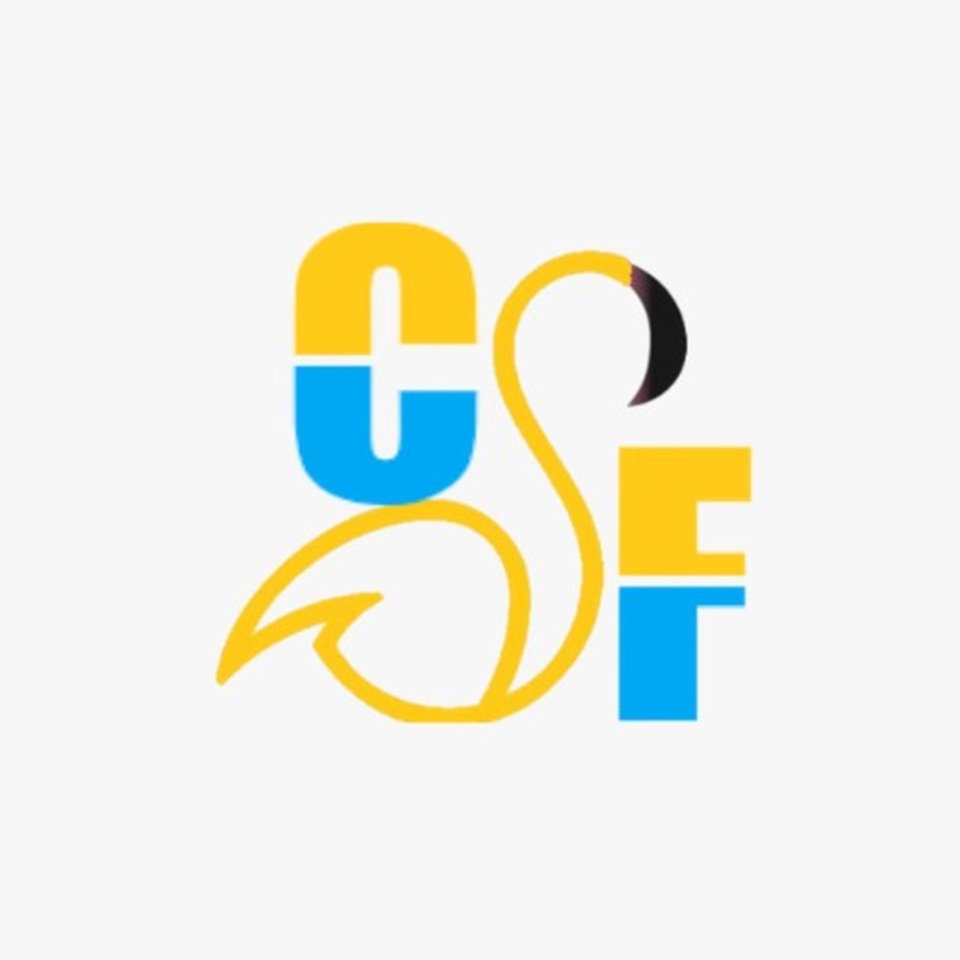
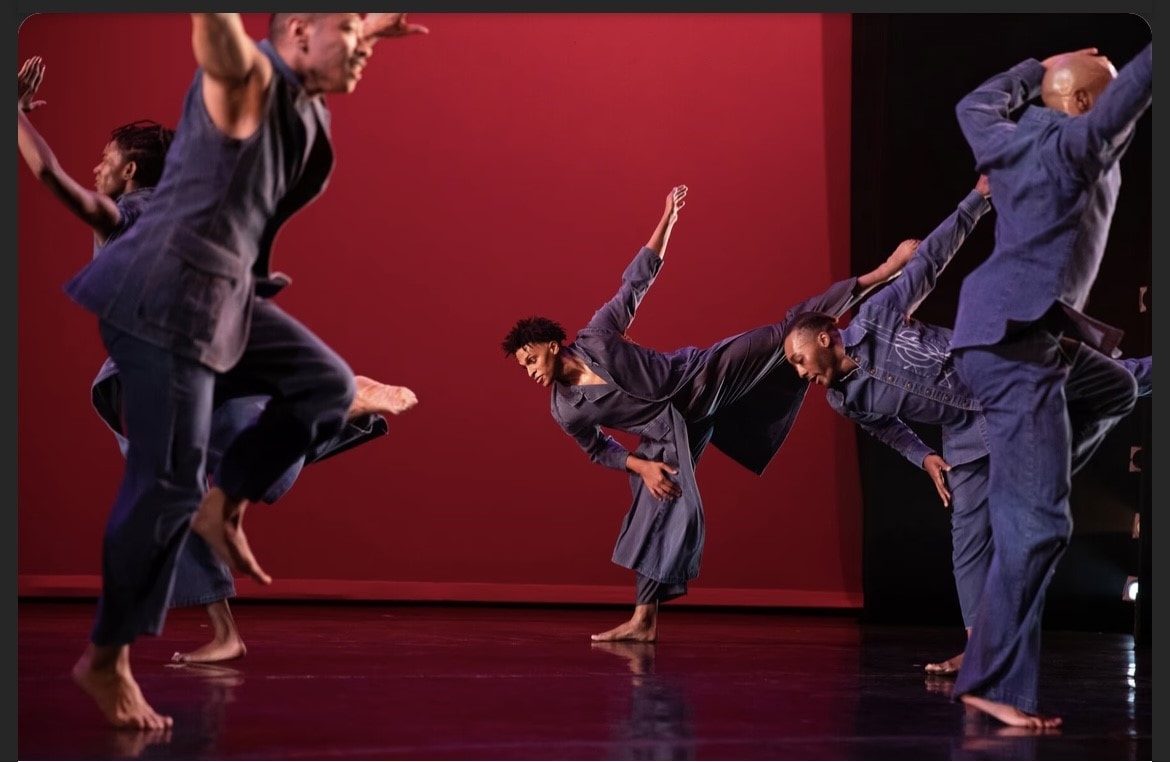
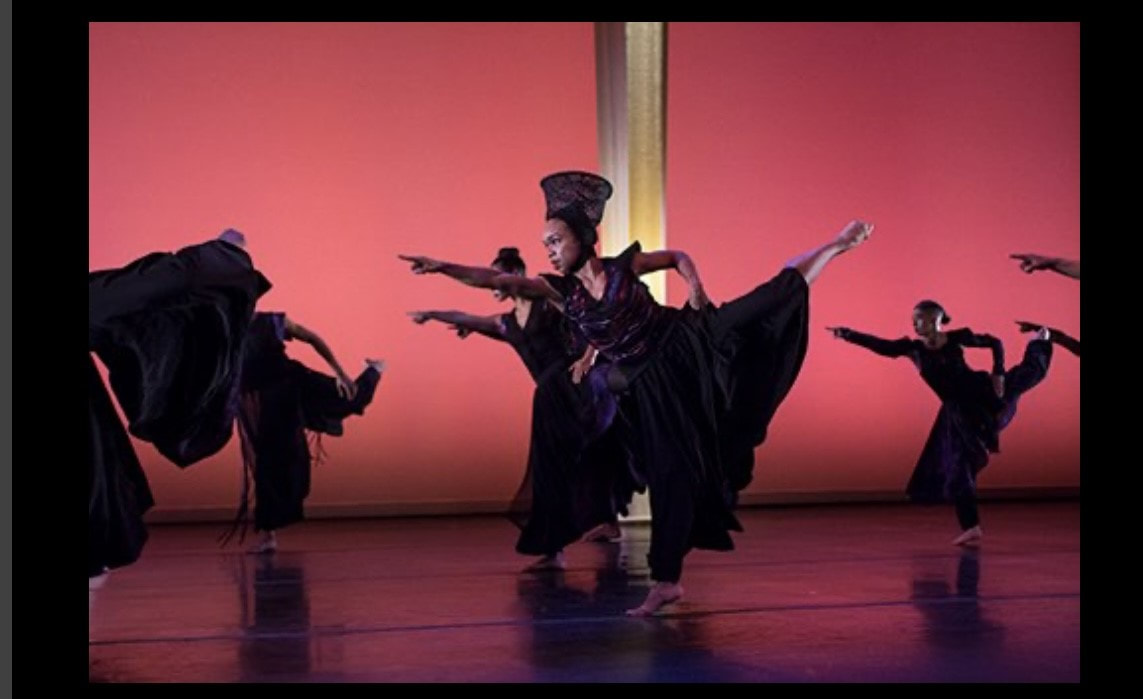
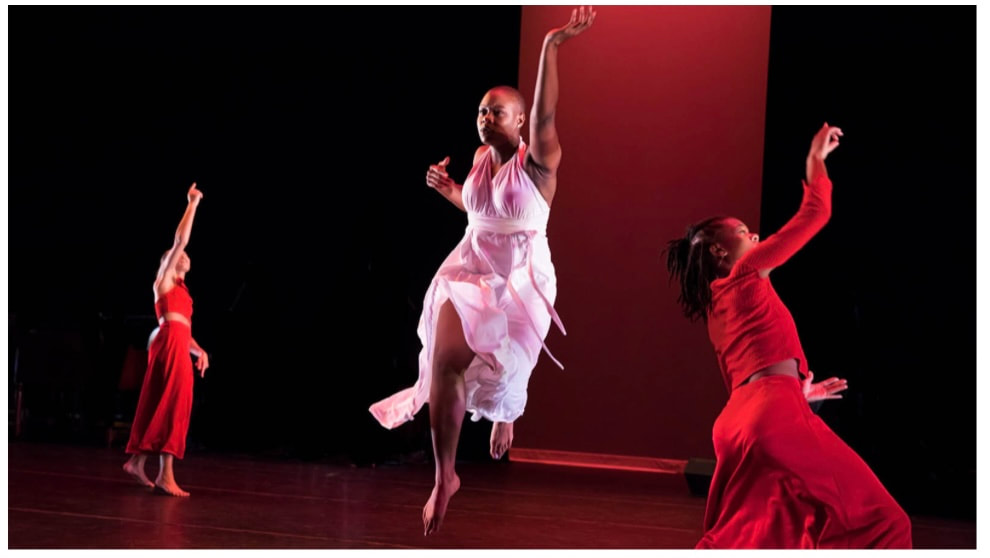
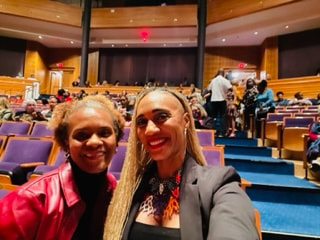
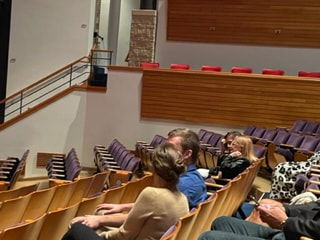
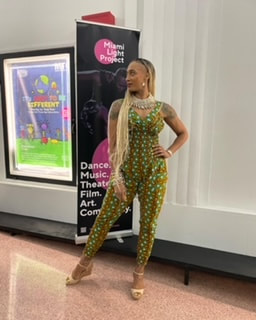
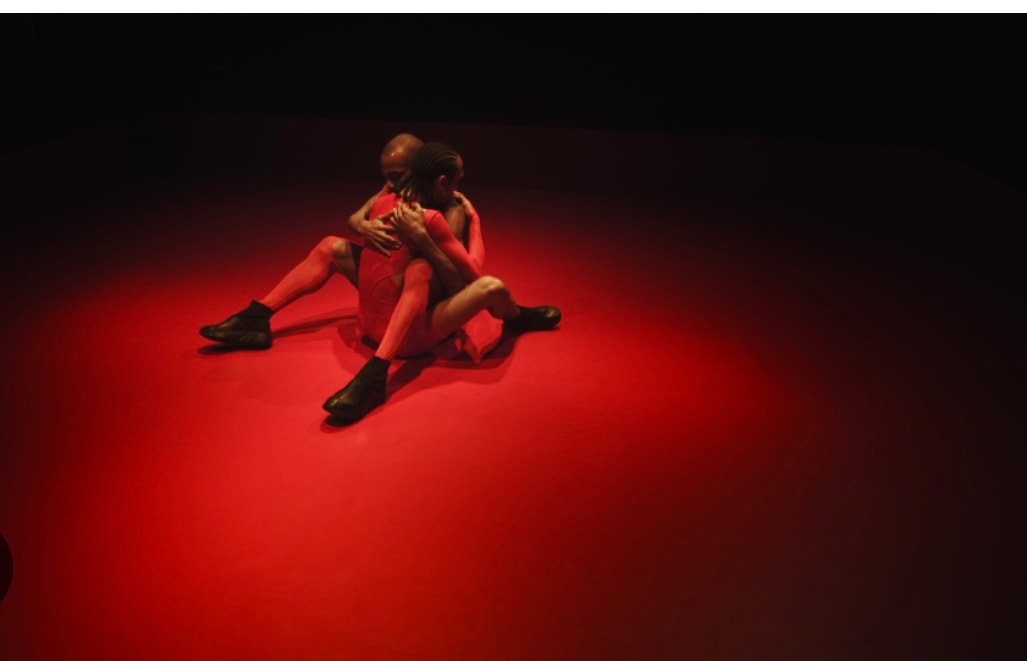
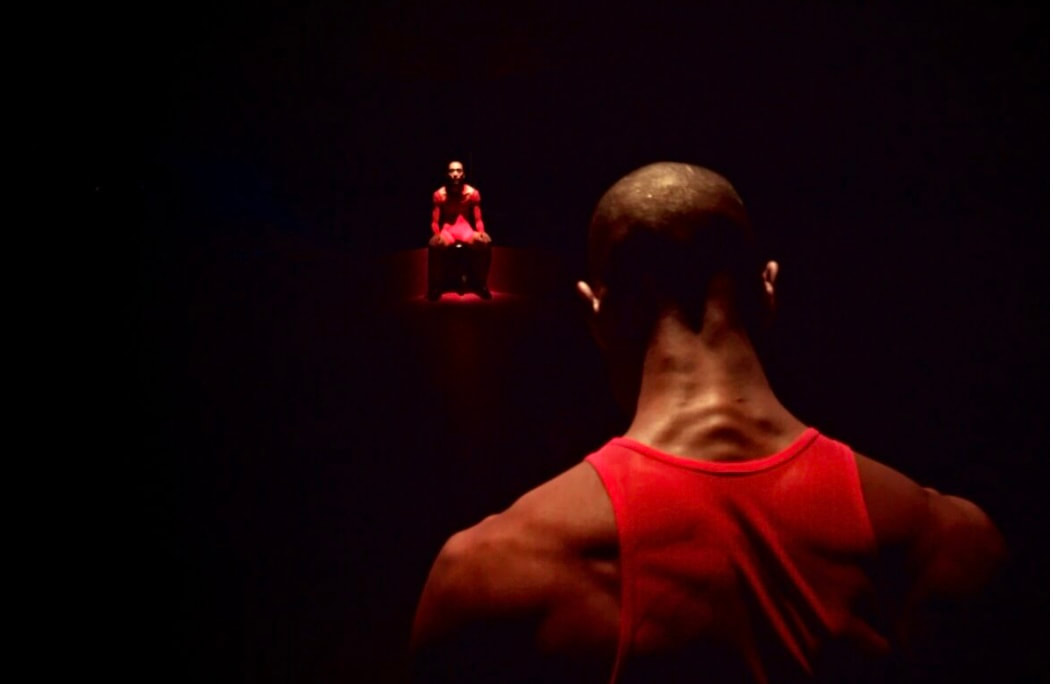
 RSS Feed
RSS Feed